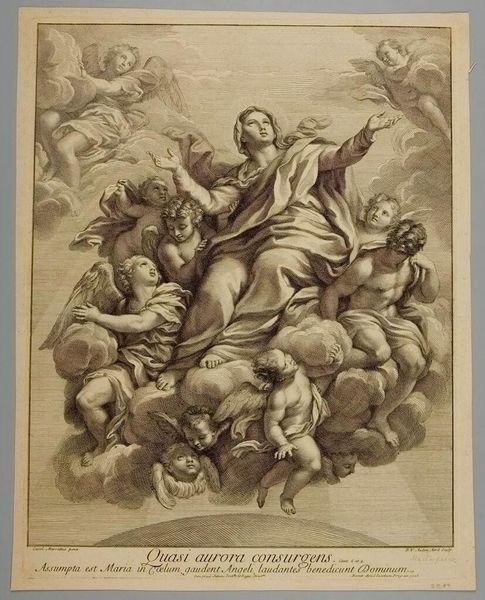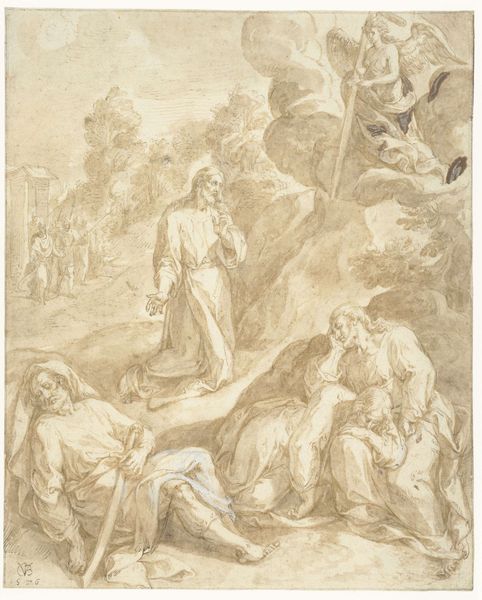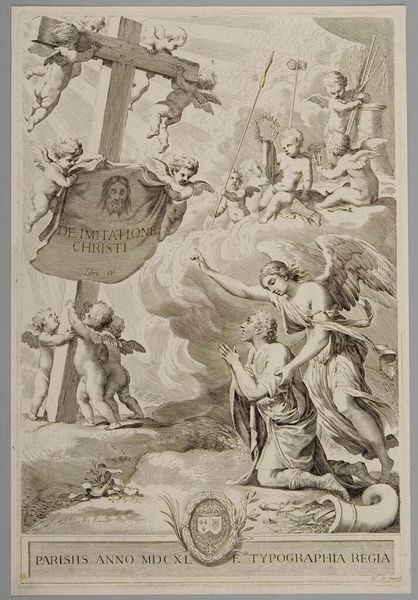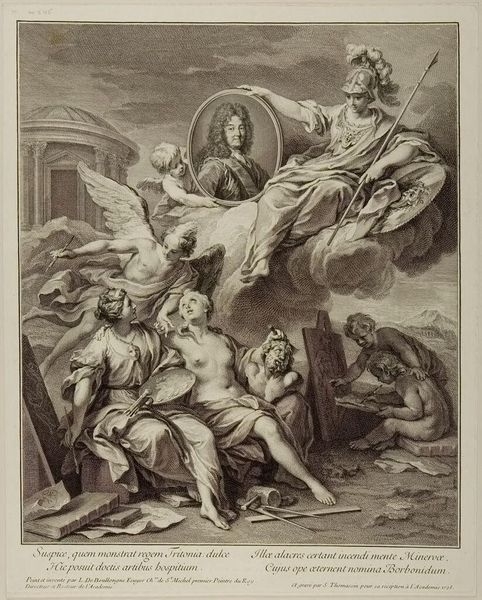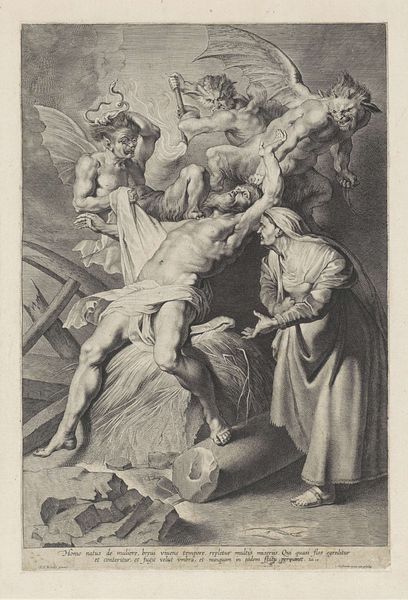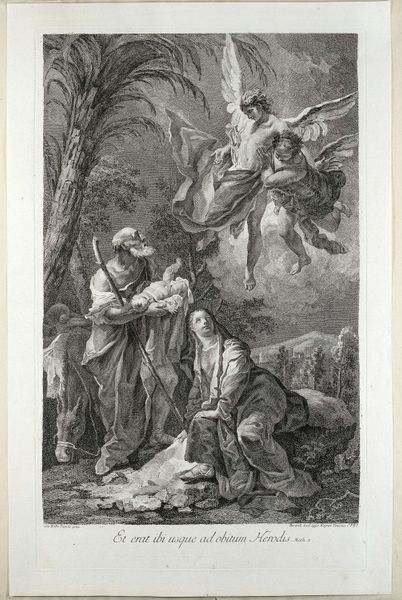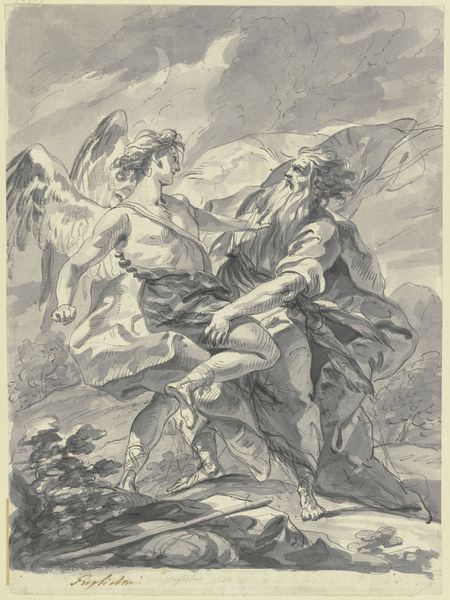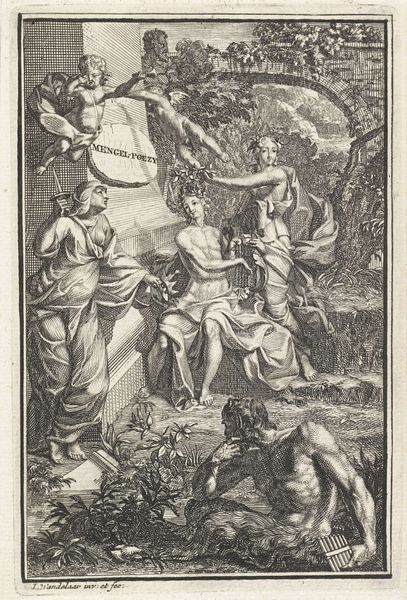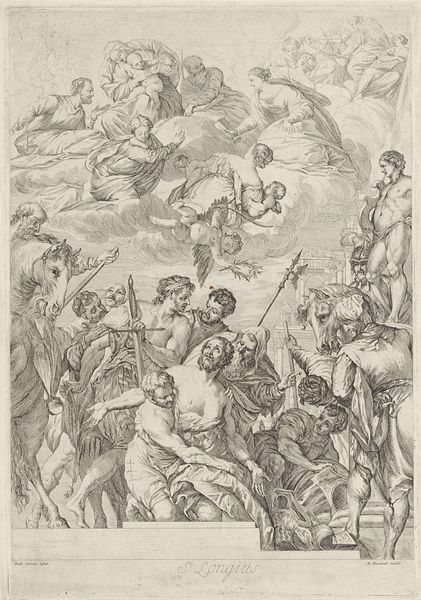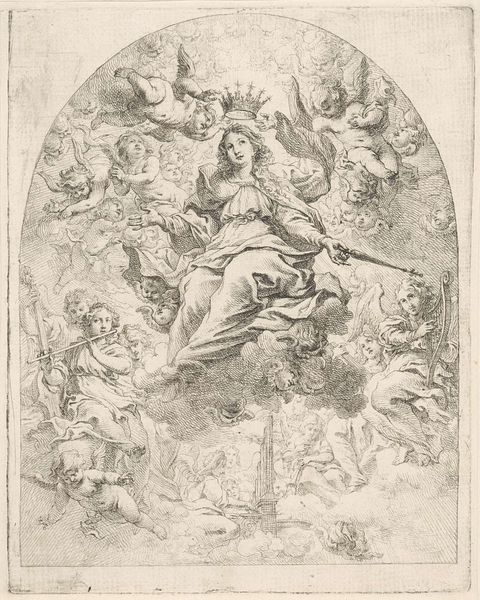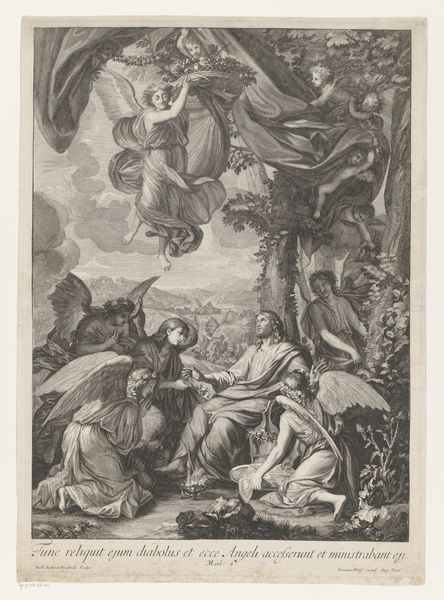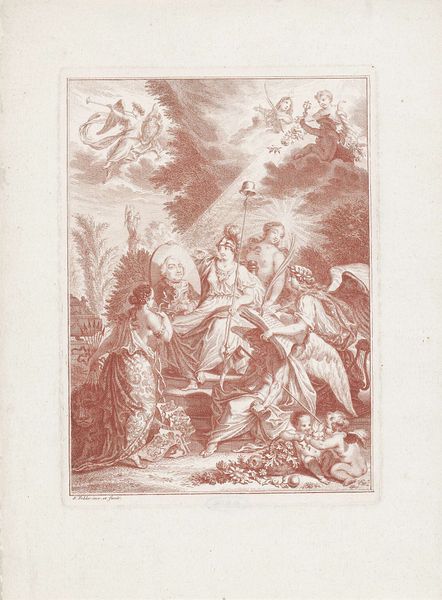
Copyright: CC0 1.0
Curator: The composition of Robert van Auden-Aerd's "Hagar and Ishmael in the Desert" strikes me as deeply melancholic, almost operatic. Editor: Yes, the stark contrasts achieved through the etching process certainly amplify the emotional intensity. The question, then, is how does the production of this image relate to the story being told? Curator: The story, of course, depicts Hagar's despair and divine intervention in the face of socio-economic displacement. The materiality of the print itself--a relatively inexpensive mode of reproduction--makes this biblical scene accessible to a wide audience. Editor: Visually, the angel's downward gaze is echoed in Hagar's upturned face, forming a vertical axis. But the horizontal repose of Ishmael disrupts this pattern, adding a layer of complexity. Curator: And consider the labor involved in creating this piece. Etching was typically a collaborative effort, with specialized workshops producing these images for consumption. Editor: It's a compelling point. Seeing it this way, I understand the interplay between spiritual narrative and the material conditions of its creation. Curator: Precisely. By considering these production elements, we gain a richer appreciation for the many layers that make up the artwork.
Comments
No comments
Be the first to comment and join the conversation on the ultimate creative platform.
